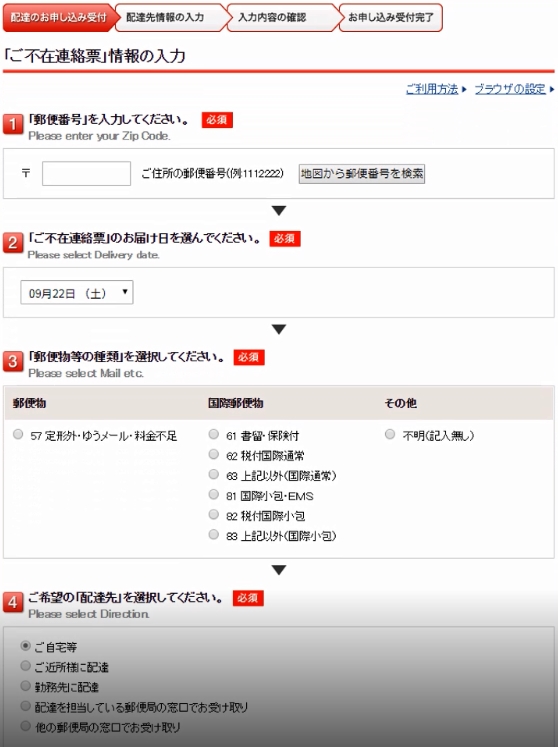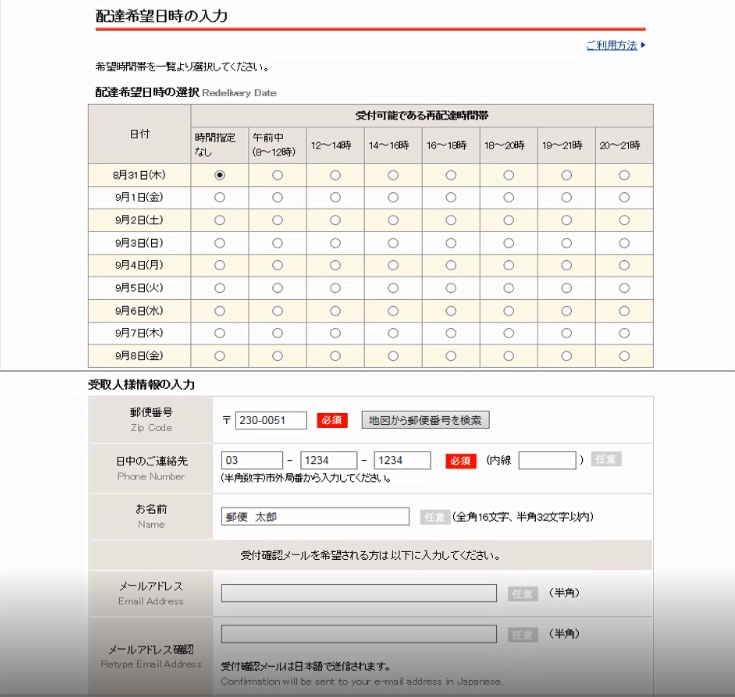This will be a thorough guide on how to apply for the JLPT online. It’s almost that time of the year again when most of us are getting all ready to sign up for the Japanese Language Proficiency Test, otherwise known as the JLPT. With varying difficulty levels from N5 to N1 (with N1 being the most difficult), it is relatively important to start deciding on which level to take on the test date before applying for the JLPT online. With that being said, let’s get on with some of the details related to the test!
Test Dates
First things first, let’s go through the dates on which the tests are being held so you can mark them down on the calendar. Throughout the span of one year, there are typically JLPT tests being held biannually. These tests are usually held once in July and once in December.
- First JLPT Test in 2023: July 2, 2023
- Second JLPT Test in 2023: December 3, 2023
Registration Dates for 2023 July JLPT
Registration through the MyJLPT page is not yet open for the July 2023 JLPT.
Registration Dates for 2023 December JLPT
Registration through the MyJLPT page is not yet open for the December 2023 JLPT.
Test Location
Moving on, let’s see the various locations in which you can take the JLPT. You have two option: take the test locally in Japan or in an educational institute overseas. For the full and comprehensive list of overseas institutes which conduct JLPT, head on down to the link over here to check if it is an approved institute.
As the location in which you take the JLPT varies, there may be different procedures, windows or deadlines of which you have to take note. However, the test date still remains to be the same. For more information on how you would go about applying for the JLPT online or otherwise, please click on any one of the links below:
1. Taking the Test in Japan
2. Taking the Test from an Overseas Educational Institute
Test Components
Looking at the test components, JLPT Test Levels N1 to N3 is composed of 3 Components: Reading (60 marks), Vocabulary (60 marks) as well as Listening (60 marks). As for JLPT Test Levels N4 to N5, there are 2 Components: Japanese Language Knowledge (120 marks) and Listening (60 marks).
If you are unsure of how to prepare for JLPT N2 or N3, click on the links and it will lead you to a guide we came up with some time back! Also, check out our Digital JLPT N3 Kanji book and our JLPT N2 Online Prep Course!
However, in order to pass, you need to meet 2 conditions:
- Score at least 19 marks for any sections with 60 marks obtainable and 38 marks for sections with 120 marks obtainable.
- Meet the overall passing grade for the test at each level. Here’s a list of the passing marks:
| JLPT Level | Vocabulary/ Grammar) | Reading | Listening | Total Score |
|---|---|---|---|---|
| N1 | 19 | 19 | 19 | 100 |
| N2 | 19 | 19 | 19 | 90 |
| N3 | 19 | 19 | 19 | 95 |
| JLPT Level | Vocabulary/ Grammar and Reading | Listening | Total Score |
|---|---|---|---|
| N4 | 38 | 19 | 90 |
| N5 | 38 | 19 | 80 |
How to Apply & Application Window
Part 1: Setting up a MyJLPT Account to Apply for the JLPT Online
Step 1: Apply for a MyJLPT Account here
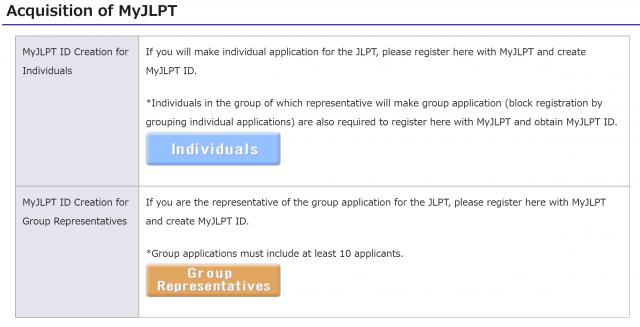
Step 2: Choose your Language
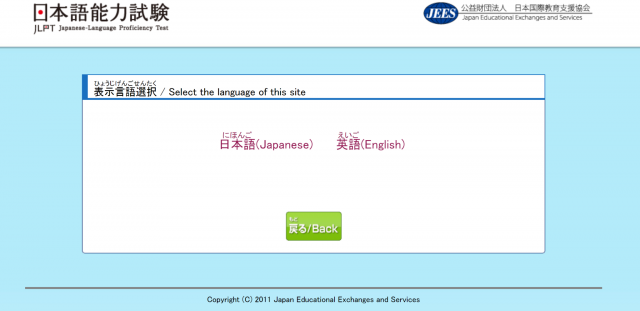
Step 3: Agree to the Terms and Conditions
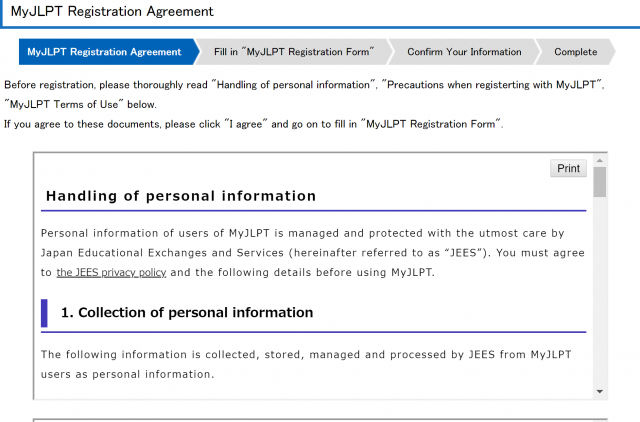
Step 4: Fill up your Details and Confirm
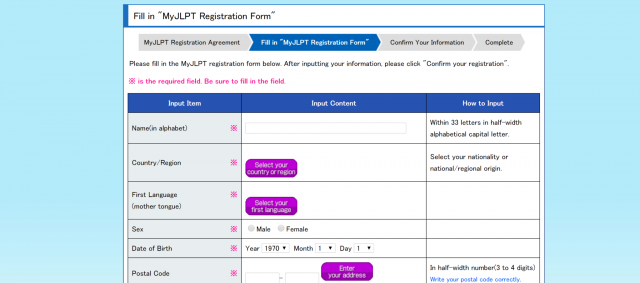
Step 5: Confirm your Personal Information and check your Email Inbox for a Confirmation Email
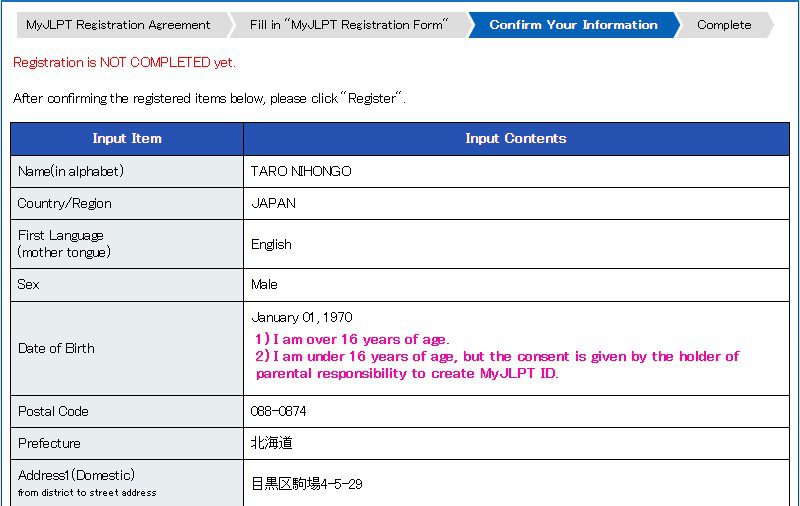
Part 2: Registering for a Test Online with your MyJLPT Account
Once you have obtained the myjlpt id you will be asked to complete the online application from your myjlpt page. The website itself is more friendly to certain web browsers – and the site recommends that you use Microsoft edge.

Step 1: Log in to your My JLPT account
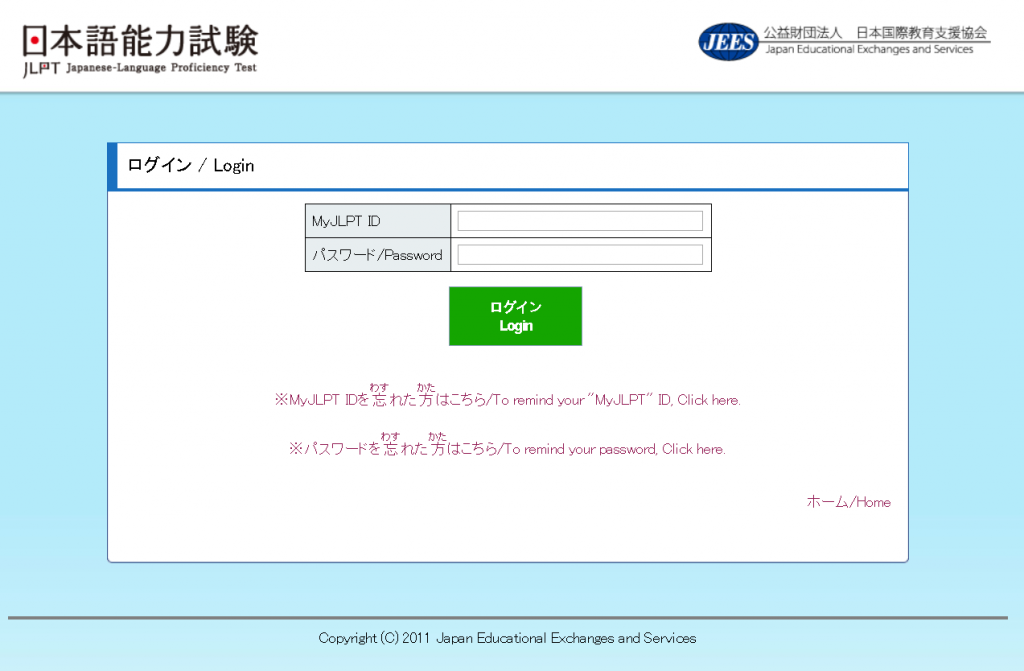
Step 2: Click on “Examination application
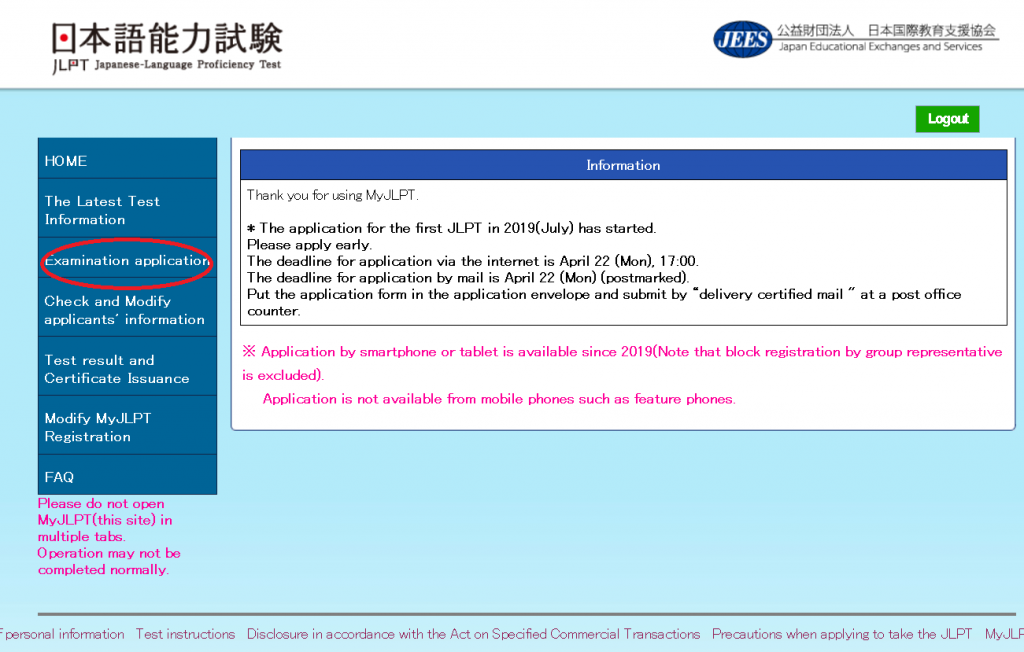
Step 3: Choose your application type
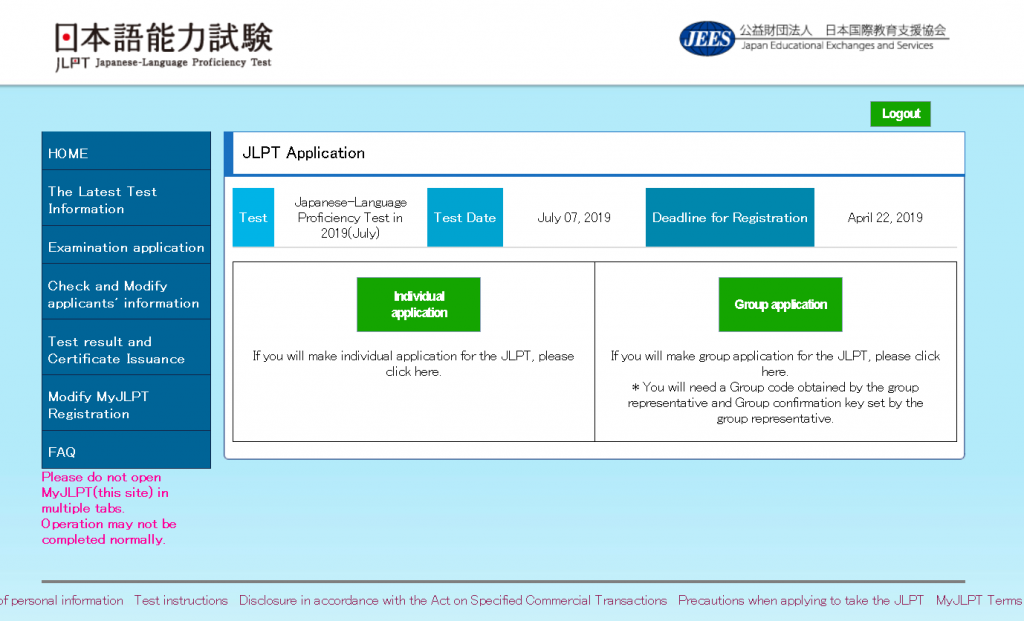
Step 4: Sign the agreement to the privacy policy
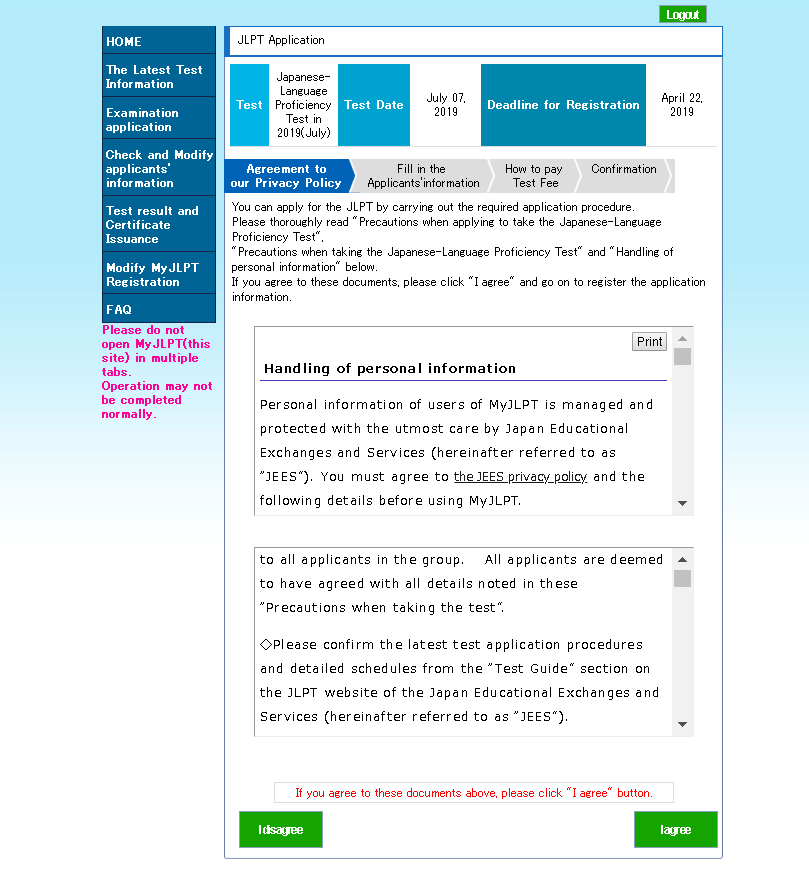
Step 5: Choose your level and fill in other details required
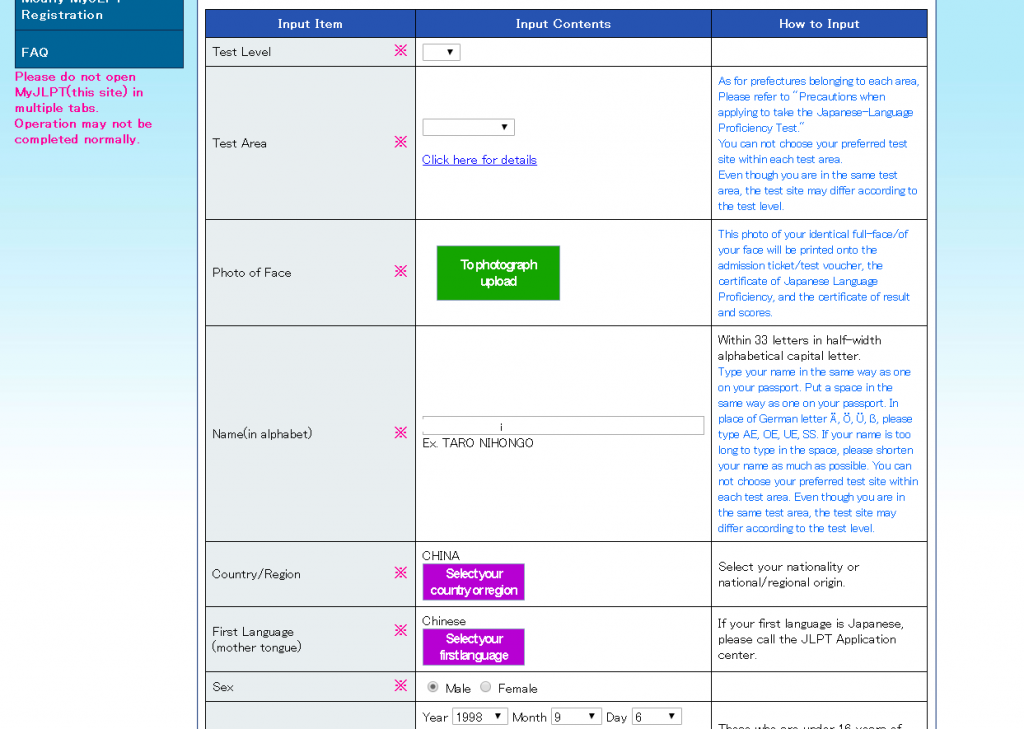
Step 6: Choose Payment type
If you are in Japan, you can pay the test fee through several payment methods: credit card, bank transfer or payment via the convenience store. Please confirm the available payment method for countries outside Japan. Generally, credit card is acceptable.
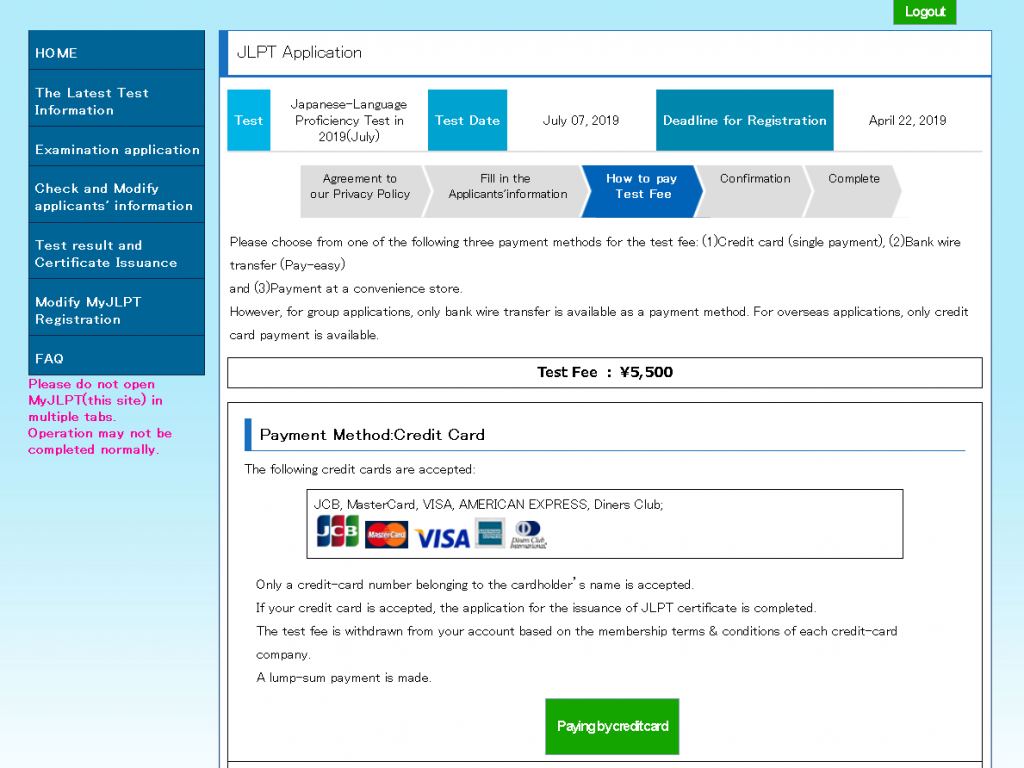
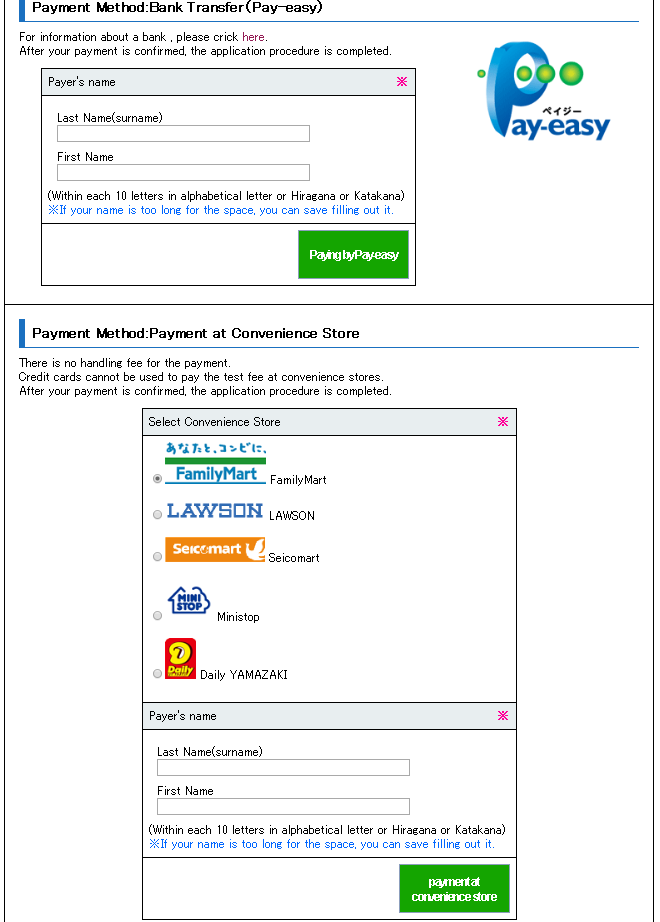
Step 7: Confirm your information
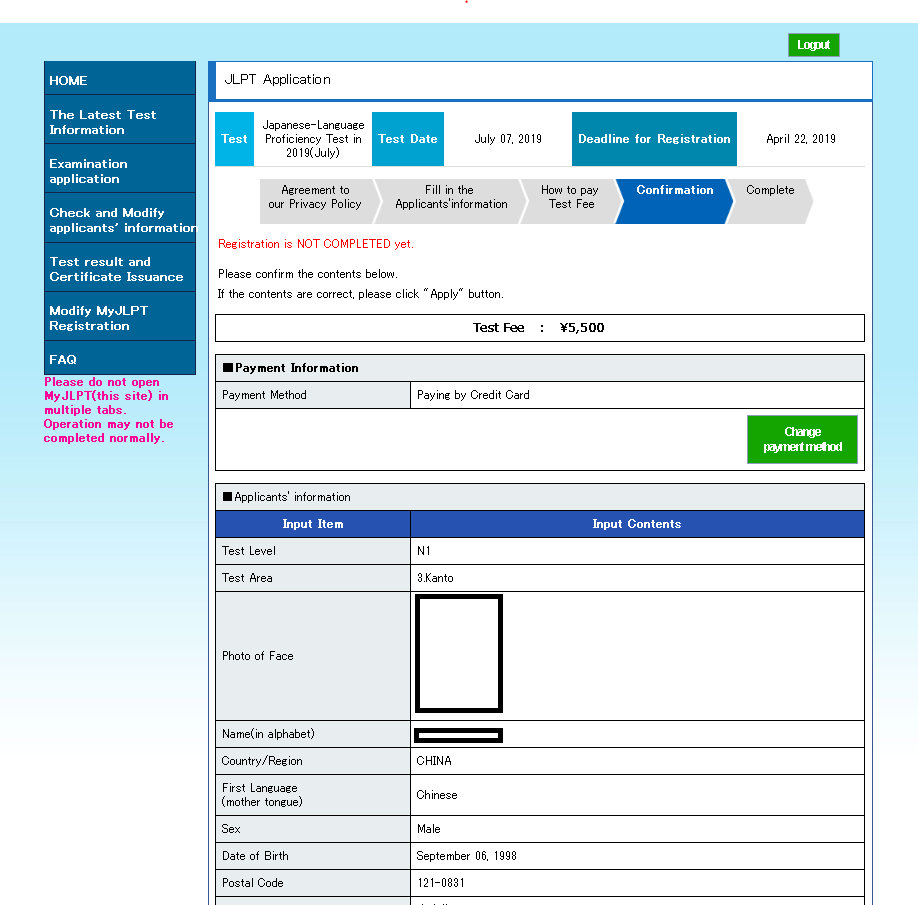
Final step: The application will be completed after confirmation of your information
Application Window
For local students, the application window can start anywhere from Mid-March (July Test) to Mid-August (December Test). As for overseas students, the application window can be anywhere from March to April (July Test) or August to September (December Test). Check your MyJLPT Account for more details and stay up to date on when you can apply.
Payment of Fees & Window for Payment to be Made
After completing your application, you must complete payment before your registration will be confirmed. Test Fees are approximately 5,500 Yen but may vary based on the location in which you decide to take the test.
If you are in Japan – the payment options for the JLPT range from online with a credit card to cash at a convenience store or post office. If you are outside of Japan – the payment method will depend on the test location.
From January 17, 2022, a separate fee of 110 yen will be required for a cash payment from Japan Post Bank ATM. For group applications, a fee of 110 yen will be required for each “payment number”.
The test payment window for December is early to late September.
After making payment, you will be set to receive a Test Voucher which you would need to bring into your test venue to confirm and verify your status as a participant of the JLPT you have signed up for. Ensure that this slip of paper is well-kept and not lost as it is very important.
If you sign up for the JLPT 2022 in December, you will likely receive your test voucher sometime in November.
With these, remember to bring in some form of identification together with your Test Voucher. With that, take the test and you’re all good to go.
Release of Results
After all that hard work, just sit back, relax and give yourself a well-deserved break. Until the time comes, enjoy yourself! But until when? Well, the release of results can vary based on whether you’ve taken the test locally or from an overseas educational institute but here are some dates you can stay on the lookout for!
- Local July Test: Early September
- Local December Test: Early February
- Overseas July Test: Early October
- Overseas December Test: Early March
Note: For Overseas Students, collect your Score Reports, and hopefully a Certificate of Proficiency, at your Local Host Institute. As for Local Students, the Score Reports and Certificates will be mailed to you directly based on the address associated with your MyJLPT Account.
If you have questions about our school or taking JLPT Prep lessons with us, don’t worry. Here’s a link to the FAQ site where you can check to see if it answers any queries you have. With that, we would like to wish you all the best and happy studying! 😀
When is the next JLPT and when can I sign up?
The next JLPT Examination is in: December 4, 2022
Registration is from: August 25 to September 15
Where do I apply?
To apply, you will need a MyJLPT account, which you can sign up for here. Once you have an account, you can sign in with your account and start to register.
When do the JLPT results come out?
Depending on when you take the test, the release of the results can differ. In general, you will get your results 2-3 months after the test. Here is when you should look out for your results depending on when you take the test!
- Local July Test: Early September
- Local December Test: Early February
- Overseas July Test: Early October
- Overseas December Test: Early March
I have a question about the JLPT that isn't addressed here. What do I do?
If you have any JLPT related inquiries, you can visit the JLPT FAQ site. Your answer should be there.

